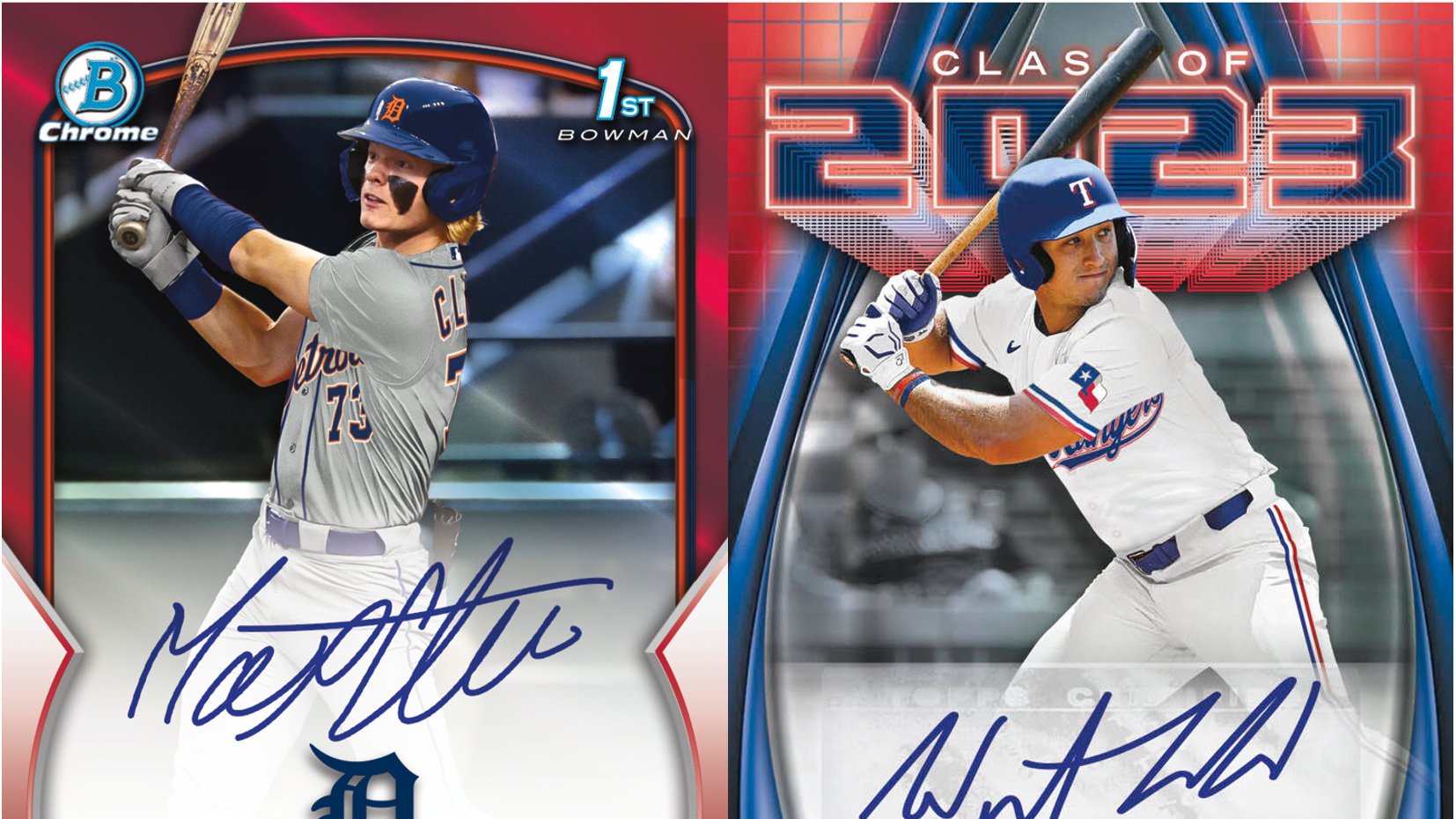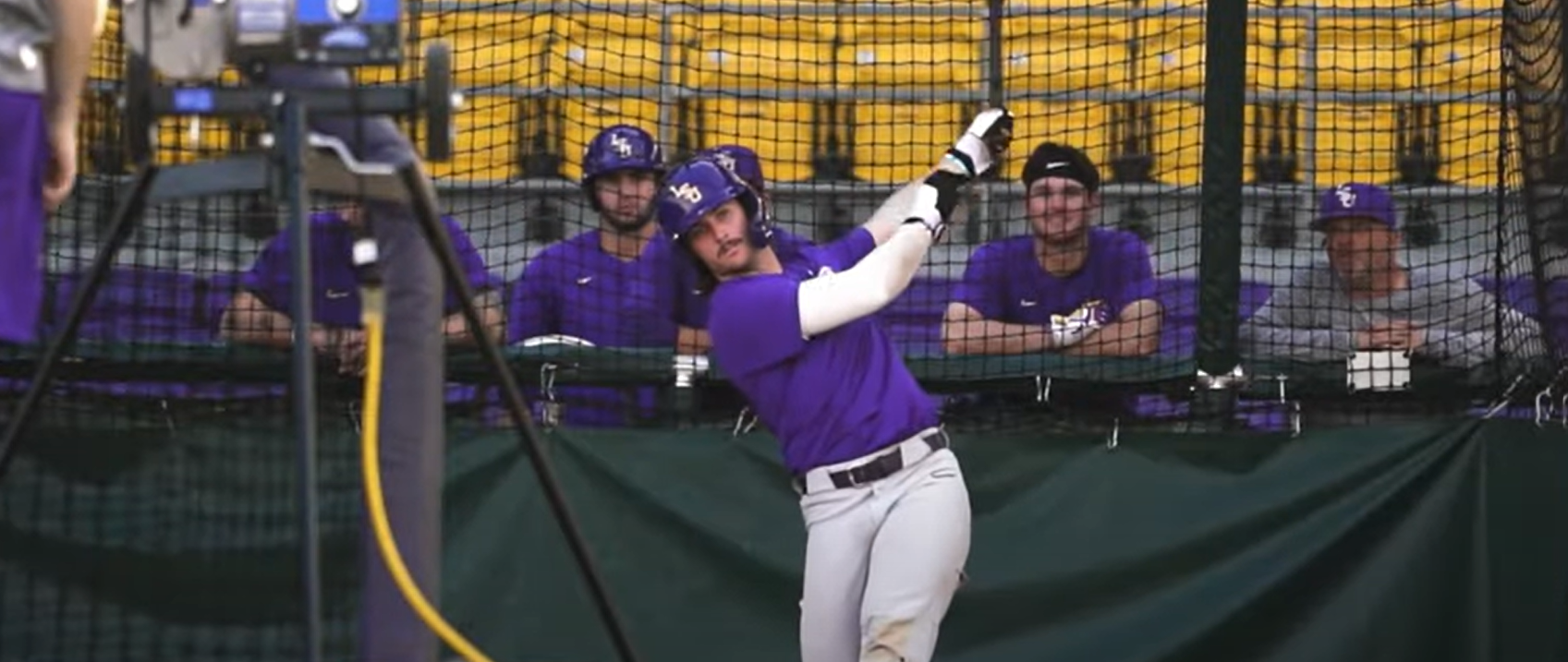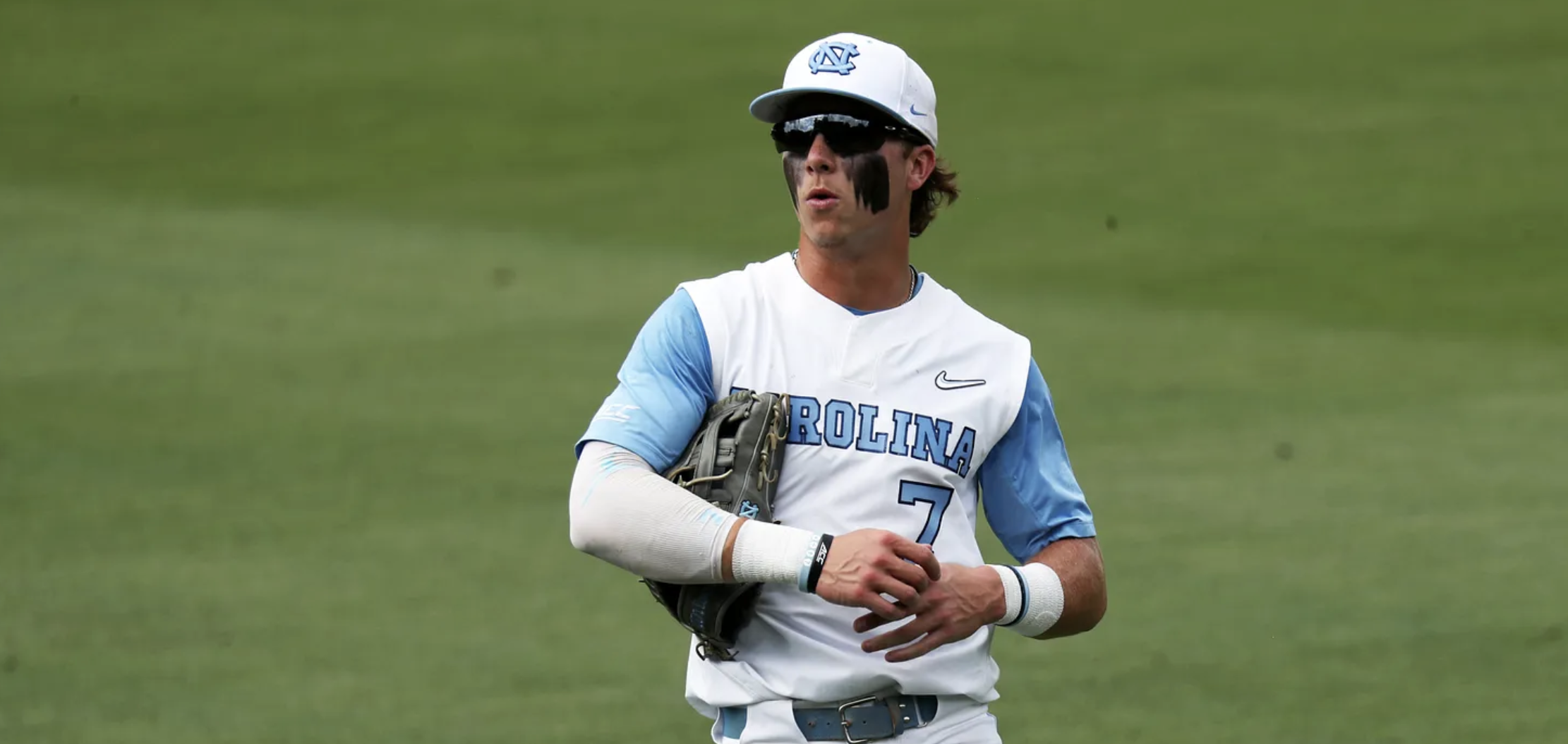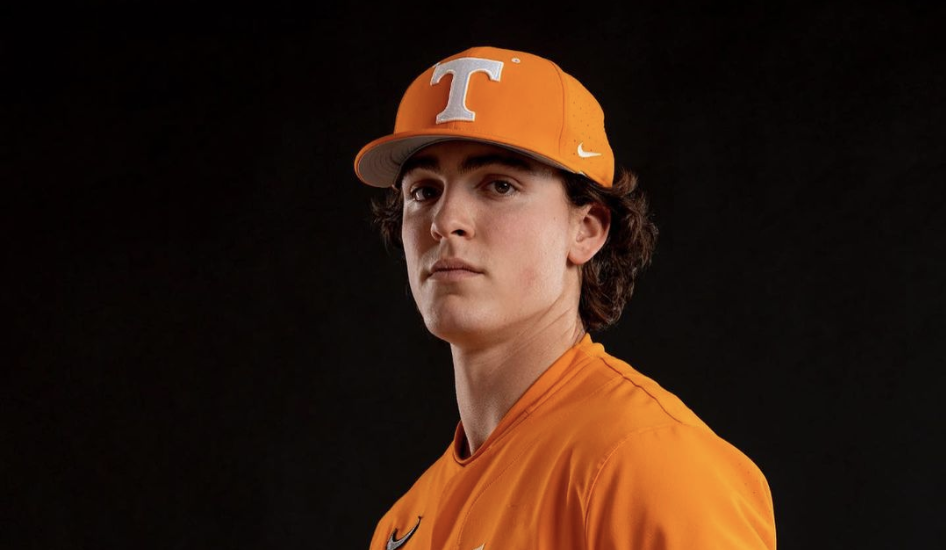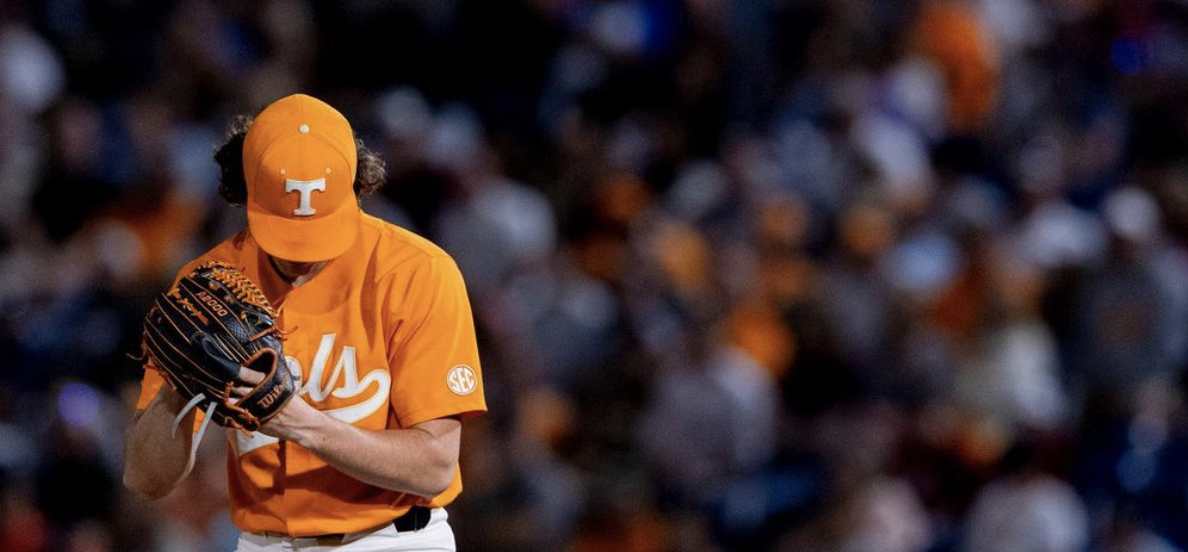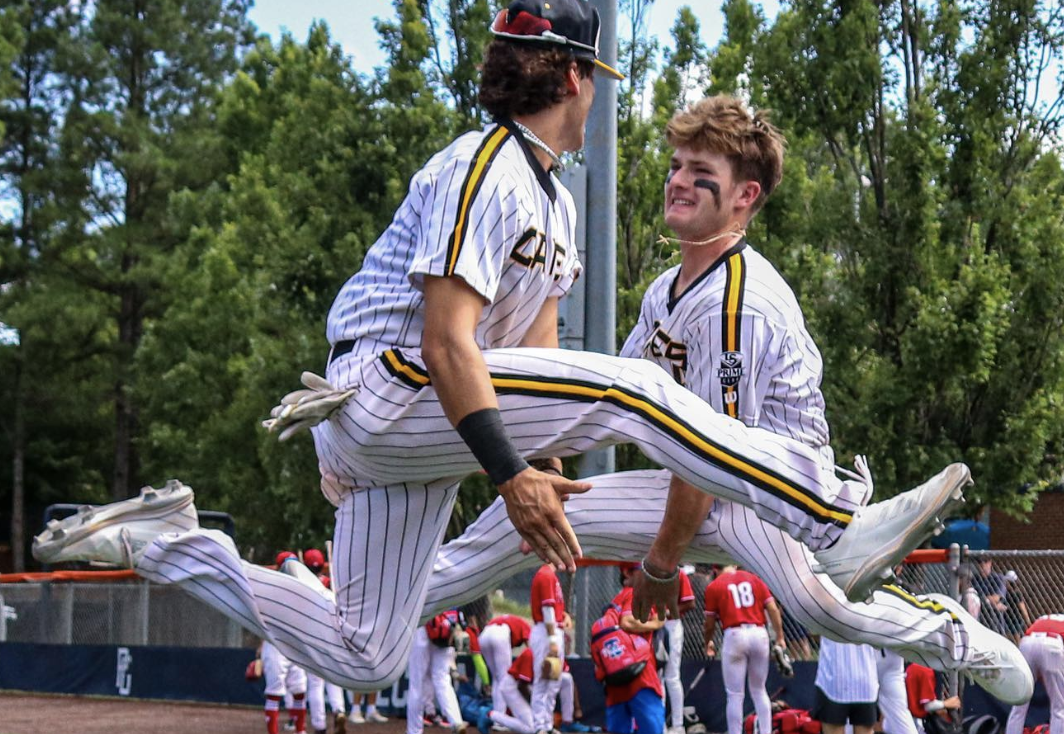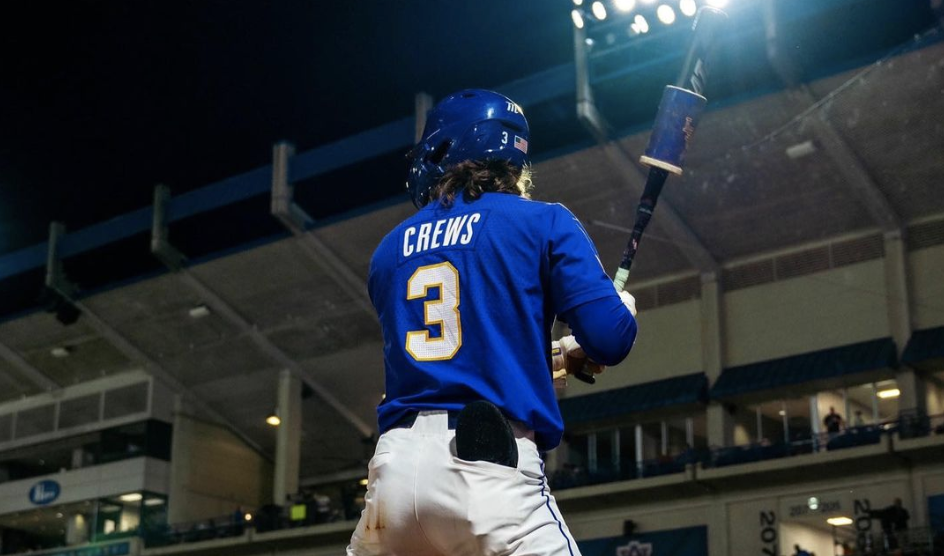MLB Draft Day 1 Standouts/Winners
The first day of the MLB Draft has come and gone and man, what a night it was.
We saw plenty of history, including the first-ever teammates to go 1-2 in the draft, as well as the fewest amount of prep arms in the first round in quite some time. It was a relatively tame night, as well, as little chaos occurred, which is a change from what previous years have given us. But which classes and picks stand out the most from Day 1? That’s what I’m here to break down.
We’ll dive into six hauls and six individual picks that stood out and garnered my attention throughout the night, as well as give a bit of insight into what we could say on Day 2.
Best Team Hauls
San Francisco Giants
Picks: 1B/RHP Bryce Eldridge (16), SS Walker Martin (52), LHP Joe Whitman (69)
The Giants currently have the cream of the crop in terms of a haul this draft. Eldridge being selected as a two-way isn’t a shock, as that is likely the reason as to why he’s a first rounder to begin with. Unlike Crawford, I think Eldridge has a better chance to be a starter with the nature of his stuff, plus the bat is pretty underrated with plenty of power. He’ll be one interesting follow.
The Martin pick came as a bit of a shock admittedly, especially given the fact that he played with a back injury throughout the spring. However, I like the aggressiveness from the front office here. Martin’s bat is legit, as he’s got one of the better hit tools in the prep ranks, plus the power got better this spring. You can question where he fits defensively, he’s got the athleticism to start in the dirt with a move to a corner spot not out of the question. But the bat is the calling card here.
Lastly, Whitman is a phenomenal pick at 69. We thought he could find his way into the backend of the first and given the success the Giants pitching development team has seen the past few years, there’s plenty to like with Whitman’s profile. The fastball has potential, the slider is already a plus pitch, and the change-up is effective. The pick seems eerily similar to Carson Whisenhunt from a year ago.
Overall, it’s a pretty high risk, high reward class. I’m interested to see what the Giants do on Day 2, especially with under $10 million at their disposal in pool money. Maybe it’s a bit more of the college underslot demographic they go after, but I’d imagine Whitman may command a bit less and provide some savings.
Boston Red Sox
Picks: C Kyle Teel (14), SS Nazzan Zanetello (50)
If I were Boston, I’d of been incredibly giddy to have Kyle Teel fall into my lap like that. Teel was a consensus top-ten guy, even being the third-best collegiate bat on our board. It’s as legit of a bat as you can find in the country, winning the ACC Player of the Year and having a potentially plus hit tool with pretty robust power. He’s likely someone that will end up peppering the Green Monster in due time. While he isn’t your stereotypical catcher, he’s very athletic back there and deserves every chance to stick there. This could be an early candidate for the steal of the first round.
With Zanetello, you’re getting a freak athlete. He’s got legitimate five-tool potential in his profile. He’s hit everywhere he has gone and the mix of very quick hands/bat speed will give him a rather robust power profile once he’s physically mature. Let’s not forget the speed he has, which grades out as plus to potentially double-plus, and a very strong arm that has hit 98 MPH, and you’ve got a very solid prep player. He was drafted as a shortstop and he should be given every chance there, though I do believe he’s either a third baseman or a right fielder.
It might only be two picks, but I don’t think Boston could have done much better here.
Miami Marlins
Picks: RHP Noble Meyer (10), LHP Thomas White (35), OF Kemp Alderman (47)
Man, what the Marlins did with their first two picks was perfect.
We’ll start with Meyer, who was the lone prep arm to be selected in the first round. We’ll jump into this later on, but I absolutely love the fit here. He’s already got a robust pitch mix, but with the way the Marlins develop change-ups, it’s just such a fun idea to think about the potential here. With White, they double down on the prep demographic and they have the pool money to get him signed. White has long been a famous name and has excellent stuff, getting into the mid-90s with a lively heater and a robust secondary arsenal, though getting that delivery in sync and scattered command gave him some fits. The Marlins know their strengths here and I’m excited about it. There’s a ton of upside here.
Alderman is also a fun profile to dive into. He has some of the best power in the entire class, consistently having exit velocities get above the 110 MPH threshold. If Miami can get him to tone down the aggressive approach and improve the contact rates, there’s a ton to like with the bat. Defensively, he’s destined for a right field spot thanks to an absolute bazooka of a right arm.
Time will ultimately tell on how these guys develop, especially Meyer and White, but if I’m a Marlins fan, I couldn’t be any more excited about their picks.
Arizona Diamondbacks
Picks: INF Tommy Troy (12), INF LuJames “Gino” Groover III (48), LHP Caden Grice (64)
The Diamondbacks’ Day 1 class is insanely fun and screams upside, especially on the offensive front.
The selection of Troy was celebrated amongst the draft team here at the site. We think he’s one of the best bats in the class with a sound approach, robust power, as well as being able to handle velocity. He had zero whiffs against pitches above 95+ MPH in 2023, which while it is a smaller sample size, it’s quite impressive. Defensively, he might end up at second base, but I like the idea of starting him out on the left side of the infield. It’s a very fun profile.
Groover does provide a bit more questions regarding the defense, but there’s no questioning the offensive ability. Groover’s MO is hitting, utilizing the whole field with a short, compact swing and having excellent plate discipline. He managed to get more into his power in 2023 as well, which was very encouraging to see. He’s likely destined for either second base, first base, or even left field, but I’d imagine Arizona will let him man the hot corner for a bit.
Lastly, Grice being a P.O. is a fun pick. Arizona is quite progressive with their arms and while Grice does have 70-grade power, the hit tool was likely never going to materialize. He was very good down the stretch for Erik Bakich with a low-90s heater that has sink, as well as a solid breaking ball and change-up. He’s relatively fresh too, as he didn’t really pitch heavily until this season. I like the fit here.
Kansas city royals
Picks: C Blake Mitchell (8), RHP Blake Wolters (44), OF Carson Roccaforte (66)
Yes, you can scream at me all you want about the prep catching demographic and how risky it is, but at the end of the day, Mitchell felt like the one to buck that trend. It’s not often that you get someone of his caliber at the position and he’s viewed as reasonably safe offensively, as he has a robust hit/power combination. He won’t get a chance to pitch like he did in high school, but rather he’s going to stick behind the dish long-term. He’s athletic and agile back there, plus the cannon of an arm that he has garnered double-plus grades. There’s a ton to like with the profile he has and I’d be very interested to see the monetary figure he gets.
With Wolters, the Royals get a very solid arm. He came into his own this spring, turning into a legitimate power pitcher with a loud fastball that gets into the upper-90s with very solid life to it. The slider will need to be more consistent, but it flashes. At its best, it’ll be a power slider in the mid-80s with nasty bite and tilt, though it becomes a slurvy breaker with gradual break when he doesn’t execute. The change-up needs refinement, too. I do trust the Royals development team enough to work their magic here.
Lastly, Roccaforte is a fun pick in the second round. While the home run power wasn’t the same as what it was in 2022, Roccaforte’s batted ball profile is incredibly fun to dive into. It’s very easy power and while there’s some things to iron out with the swing, there’s a lot to like there. He’s an above-average runner that has a chance to stick at the eight with solid route running and great defense. He’s got high grades on models, too.
Detroit Tigers
Picks: OF Max Clark (3), INF Kevin McGonigle (37), INF Max Anderson (45)
Could this be a bit of a hot take? Maybe. It’s hard to pass up on a talented college bat in Wyatt Langford, but Max Clark is the kind of bat you feel comfortable passing on Langford for.
Clark’s offensive profile is a bit power limited when compared to the other names in the top five, he’s likely going to max out at average to above-average power when all is said and done. However, he’s a potentially plus hitter with a smooth left-handed swing that’s short to the ball and he can shoot the ball to all fields with ease, as well as having a pretty sound approach at the dish. What does give him the edge over someone like Walker Jenkins is the defensive upside here. He’s got a solid chance to stick in centerfield with very solid speed, route-running, and defense at the next level. Detroit did very well here.
McGonigle can be seen as a bit of a steal in the compensation round given the offensive upside and the first round grade we gave him. It’s pretty similar to what Clark’s bat is, a plus hitter with potentially above-average power when all is said and done. He has a lengthy track record of hitting everywhere he has gone and doesn’t strike out a ton against solid competition. If there’s anything to knock McGonigle on, it’s the fact that he’s likely limited to second base. He was drafted as a shortstop, but given the muscle he added and limited arm strength, a move seems likely down the line. But you can’t argue with an offensive-minded second baseman.
Lastly, Anderson had some helium in the last couple of weeks and felt destined to go higher than the ranking we gave him. Surely enough, here we are, as Anderson went 16 spots higher than our ranking. Anderson just flat-out hits, slashing .414/.461/.771 in the spring with Nebraska with very solid power output, particularly to the gaps. He does chase quite a bit and the walks aren’t where you’d want them to be, but he does a very good job of limiting the strikeouts. His defense is a question mark, though, given the lack of arm strength and range at second base. He’s likely a first baseman at the next level.
Honorable Mentions: Minnesota Twins, Cincinnati Reds, Tampa Bay Rays
favorite picks
Andrew Walters (no. 62/Cleveland)
I’ve seen a bit of scuttlebutt about Walters being a relief-only guy during his time at Miami, so I raise you this: he was one of the best closers in ACC history. Plus, given the electric nature of the fastball and the potential to move quickly as a bullpen ace in Cleveland’s system, I absolutely love the fit here. Walters has a unique fastball with a low release, flatter VAA, and excellent command. It was an incredibly dynamic pitch in college, and while you could say he’s a one-pitch pony, Walters has seen improvement in the breaking ball department, ditching the loopier curveball for a harder slider with solid bite. Cleveland’s pitching development is amazing, too. It’s hard not to love this pick.
Hurston Waldrep (No. 24/Braves)
Atlanta’s farm system is littered with a ton of arms, so why not add Waldrep to the fold? This feels like a steal given the nature of his stuff, particularly the off-speed, but I believe the Braves can be a development team that can fix his fastball. We already know how good the off-speed arsenal is, as the splitter is a legitimate 70-grade pitch and the curveball/slider are both above-average, but if Atlanta can fix his fastball command, this has the makings of another quick riser in that system. It’ll also help him live out his potential as a starter. If I’m Atlanta, I’m very happy that Waldrep fell this far.
Noble Meyer (No. 10/Marlins)
I know I’ve already touched on how much I like this pick and the upside, but it’s one of my favorite fits in the draft thus far. Miami knows how to develop pitching, there’s no question about that, and Meyer has one of the best pitch mixes in the class that’s led by his plus slider. But if there’s anything I’m excited about here, it’s the development of his change-up. We’ve covered it in Deep(er) Drives, but the one thing industry folks wanted to see was more change-up usage. Miami knows how to develop the pitch and given the fact that Meyer has already made some tweaks to the pitch over the past year, I like the potential here.
Colin Houck (NO. 32/Mets)
Houck sliding this far was not on my bingo card, especially given we had him mocked to the Diamondbacks at 12. Houck’s upside is tremendous and he’s incredibly athletic. It’s a very solid swing from the right side and with the projectable nature of his frame, the power potential is quite high. There’s also enough to suggest that he sticks at shortstop long term with his twitch, range, and arm strength. The Mets may have gotten a legitimate steal with their first pick here.
Chase Davis (no. 21/Cardinals)
Yeah, this was a match made in heaven. The Cardinals needed this kind of bat in their system and Davis fell right into their laps. He’s really evolved as a hitter in the past year, dropping the whiff and chase rates and shortening up the swing, all while keeping the robust power he’s always had. It’s likely that he gets a chance to start in center field, but in all likelihood, a move to a corner spot seems likely. I really, really like this fit.
Walker Jenkins (no. 5/Twins)
The Twins were big winners in the draft lottery back in December and they get someone who fits their M.O. perfectly. While the medical history pushed some teams away, the upside here is amazing. It’s a potential 60-hit/60-power bat with Jenkins, as he has robust bat speed and impressive bat-to-ball skills that you don’t find often in a prep bat. He’s likely a fit for right field instead of center moving forward, where his strong arm should play very well. He’s got the speed to handle center, but he likely outgrows the position. All in all, Minnesota likes their high-OBP and power guys and Jenkins fits that bill.
2023 MLB Draft: Top 500 Prospects - Final Update
Deep(er) Drives: Chase Davis
Continuing the Deep(er) Drives series, we’re going to focus on one player who saw a meteoric rise this season.
Arizona star outfielder Chase Davis entered the 2023 season as a notable draft prospect. A top-50 pick was not out of the question due to a rounded toolbox, however, his offensive game was feast or famine. While Davis’s swing has always drawn favorable looks due to Carlos Gonzalez's parallels, his pre-2023 performance created uncertainty as to whether he could produce at a high level in the pros.
Exorbitant swing and miss rates against secondary pitches were the cause for concern. Davis’s approach has always been above average, working counts, selectively tailoring his attack against fastballs, and working a huge share of walks. Fast forward through 2023 and those strengths remain. Amazingly, the issues with secondary pitches have seemingly dissipated without any real adjustment to his approach rather mostly mechanical alterations to his setup and swing.
With that preface in mind, let’s give a full overview of Davis as a prospect and show comparisons from his 2022 and 2023 campaigns.
Swing mechanics
Davis has always excelled at elevating the baseball because of his bat path and ability to strike the lower half of the baseball. However, that is the main carryover from last year to this one.
In 2022, Davis’s setup and swing actually look pretty unrecognizable from where it stands now. Last year, he deployed a closed stance with his hands set just above his head compared to now where he sets up extremely wide and lowered his hands to roughly head level.
Davis’s 2022 stance and swing
In action, this has allowed Davis’s stride to create most of the potential energy and torque when he brings his front foot from the wide position to his swing launch, focusing most of the movement in his core and lower body. In the past, with his closed stance, Davis’s load involved upper body movement to try and create impact which caused his hands to move more wildly as he initiated his swing.
Davis’s 2023 stance and swing
Quiet hands typically allow for more precise swings and consistency in controlling the barrel. Which is exactly what we saw this year. Not only can that precision reduce swings and misses but increase contact quality. As with every player, there are still some lingering imperfections and there is still some hand waggle at times but the improvement has allowed Davis’s patience and premium raw power to play at elite levels.
The Results
Last year, Davis ran a 31% whiff rate—on the much higher end of the spectrum before overall production becomes hard to sustain. His zone whiff rate was 22%, also much higher than average for quality draft prospects.
This year his overall whiff rate dropped to 20% and his zone whiff rate was halved to 11%. Subsequently, his strikeout rate dropped from 22.8% to 14%. These contact rate improvements are shocking on a year-to-year basis and much of it has to deal with quieting the hands and creating a springier core-based load. Those contact rates are also in very positive territory where Davis can enter the pros without swing-and-miss concerns.
Digging deeper, Davis saw his breaking ball whiff rate drop from 50% down to just 25% and his offspeed whiff rate from 38% to 19%. As a prodigious fastball hitter coming into the year, Davis narrowly improved his whiff rate against heaters from 20% to 18%.
In terms of OPS, his overall OPS ballooned from .997 to 1.231. His OPS against fastballs jumped from 1.116 to 1.324, against offspeed from .958 to 1.510, and against breaking balls from .767 to .917.
Coming into the year, Davis deserved a below-average 40-grade hit tool. His approach was very sound with just a 19% chase rate but the swing-and-miss issues would have been prohibitive of even average on-base production. After remarkable improvements, I’d make the case that Davis’s hit tool grades out above average, if not even plus. He’s patient and now handles all pitch types well with above-average contact rates. Mix in the typical quality of his contact and proclivity to elevate the baseball and there will be walks and extra-base hits galore in Davis’s pro future.
Davis has always had double-plus raw power and these refinements to his bat will allow the mid-110s max EVs to play more frequently. This creates an extremely rare blend of power and contact that few players in college baseball can boast.
In the field
Obviously, Davis is a premier offensive talent in this year’s draft but his potential as a 5-tool player drives the hype of being taken in the top half of round one.
First, Davis can notch times slightly below 4.2 up the line, not burner speed but it’s at least average speed and Davis covers ground a little faster than that once accelerated. Davis has plenty of center field experience from his time on the Cape but has almost exclusively slotted in left field with Arizona.
Davis doesn’t look the part of a plus center fielder but he makes sound reads, gets quick jumps, and takes efficient routes, allowing him to maximize average speed and be a quality outfielder. The athletic profile isn’t a lot different from Tennessee’s Jordan Beck last year. Beck mostly played right field for the Vols but was fundamentally strong and a tick above average speed-wise. Now in the pros, Beck has played roughly a quarter of his games in center and I expect a similar path for Davis.
Unquestionably, Davis possesses plus arm strength and consistent accuracy. As a result, whoever drafts Davis will end up with a plus corner outfielder but they’ll likely juice out his potential to hang in center field where Davis could end up average.
Final thoughts
Frankly, Davis is a special talent and a now refined skillset to back it. The tangible improvements Davis made year-to-year should be viewed in their own light as evidence he can adapt and make adjustments as necessary, a capability that can make or break careers. Davis won’t hang on the board very long and it would not shock me if he turned into a top-10 underslot selection.
2023 MLB Draft: Top 400 Prospects - May Update
Live Looks: UCLA vs Arizona
2023 MLB Draft - Top 400 Prospects
A new year, a new board and new ranks. The Top 300 is here. With the summer showcase circuit behind us and college fall ball in the rearview mirror, we’re ready to re-rank the 2023 draft class. Our team has taken in 9 showcase tournaments and been closely monitoring fall scrimmages. We’ve collected data and pitch metrics from guys showcasing their summer gains and, boy, do things look promising. Some guys are breaking out.
2023 MLB Draft - Top 300 Prospects
A new year, a new board and new ranks. The Top 300 is here. With the summer showcase circuit behind us and college fall ball in the rearview mirror, we’re ready to re-rank the 2023 draft class. Our team has taken in 9 showcase tournaments and been closely monitoring fall scrimmages. We’ve collected data and pitch metrics from guys showcasing their summer gains and, boy, do things look promising. Some guys are breaking out.
Five Super-Sleepers Who Could Go No. 1 in the 2023 MLB Draft
On New Year’s Day last year, Jackson Holliday ranked as the No. 42 overall prospect on our 2022 MLB Draft Top 300. It’s not just our board either. MLB Pipeline had Holliday the No. 52 overall prospect this time last year. The rest is history. In 2021, Henry Davis surged from a late-first round projection to going first overall. In 2020, Arkansas outfielder Heston Kjerstad ended up going No. 2 overall, but just six months prior he was more thought to be a guy that’d go in the 25-40 range. Surely 2023 is likely to offer similar narratives.
2024 MLB Draft - Top 100 Prospects
2024 MLB Draft - Top 100 College Prospects
2024 MLB Draft - Top 50 High School Prospects
2023 MLB Draft - Top 200 Prospects
A new year, a new board and new ranks. With the summer showcase circuit behind us and college fall ball in full swing, we’re ready to re-rank the 2023 draft class. Our team has taken in 9 showcase tournaments and been closely monitoring fall scrimmages. Some guys are breaking out. As always, our boards are built on three pillars:
2023 MLB Draft - Top 150 Prospects
2023 MLB Draft - Top 100 High School Prospects
A new year, a new board and new ranks. With Prospect Development Pipeline and the Perfect Game National Showcase in the books, we’re prepared to release our Top 100 prospect. These will shift in the coming months after Area Code Games, East Coast Pro and World Wood Bat Championships, but we’re feeling pretty good about where things currently lay.




